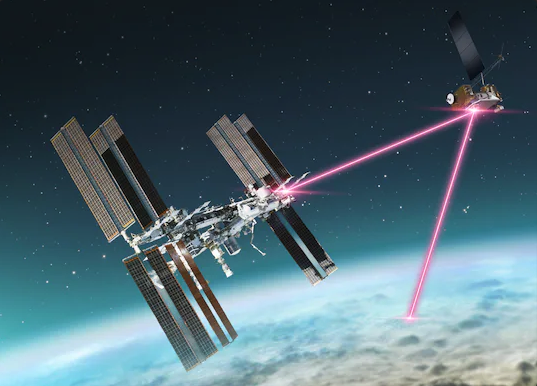For the longest time, space-to-Earth communications have focused on radio-based systems to communicate to the home base and bring information from its findings, but that is soon to change with NASA's upcoming lasers. The next resupply mission of NASA to the International Space Station, it is bringing a terminal that would help demonstrate laser communications.
This will complete the project that NASA first launched in 2021, one that would help test out this experience for astronauts in the ISS.
NASA to Bring Laser Communications to the International Space Station

NASA announced a mission in late August to bring the next part of its project, a laser-based communication that it would demonstrate to revolutionize its technology for bringing information at a faster speed. This will be sent to the International Space Station, the football-sized spacecraft orbiting the Earth that has set its platform to be the center of space research.
This year, NASA will be sending a terminal known as the Integrated LCRD Low Earth Orbit User Modem and Amplifier Terminal (ILLUMA-T) to the space station to complete its laser communication project and begin testing. Earlier in December 2021, NASA sent the Laser Communications Relay Demonstration (LCRD) for this specific venture, with the ILLUMA-T joining to complete the ensemble.
Two-Way, End-to-End Laser Communications for Space
With the ILLUMA-T and the LCRD together, it is set to bring a two-way, end-to-end laser relay system for the space station and bring the information to Earth.
This laser system is expected to bring as much as 100 times more data than the current radio-based communications system.
"We are integrating this technology on demonstrations near Earth, at the Moon, and in deep space," said Badri Younes, former deputy associate administrator for NASA's SCaN program.
NASA's Radio-Based Communications
NASA has used radio waves to be its main form of communication and detecting space discoveries in the massive cosmos, and it has proven to be an iconic way to study new things and phenomena. There is one plan by NASA to bounce off as much as 9.6 million radio waves on the Asteroid 2010 XC15, using the High-frequency Active Auroral Research Program (HAARP).
Still, radio-based communications and detection are a significant focus from NASA, as the famed spacecraft, Hubble, has recently discovered deep space radio signals and FRBs (fast radio bursts) from distant galaxies. These galaxies are still forming but have already sent signals across the cosmos, also heard by the Voyager-1 spacecraft.
The laser-based communications that NASA will soon demonstrate and test out will look into how effective it would be to communicate from the International Space Station down to the world. It is expected to transmit as much as 100 times more data compared to the current radio-based systems that NASA is using, but this is yet to be determined as it will begin once the payload has been delivered.

ⓒ 2025 TECHTIMES.com All rights reserved. Do not reproduce without permission.




